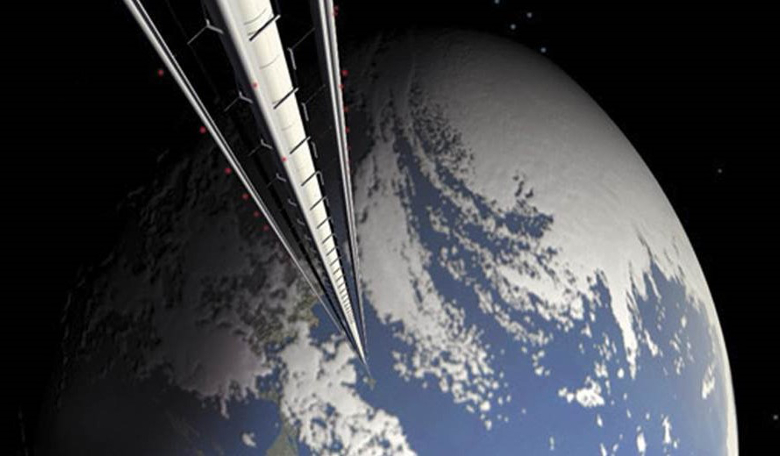There are many of us who would like to venture above the atmosphere of our planet and to experience what it feels like to be an astronaut on the International Space Station. But for non-professional space adventurers, such dreams are generally reserved for the super wealthy who can afford the cost of a ticket on a SpaceX rocket.
What then, if one day you could catch an elevator to a space station instead? Right now, somewhere in low-Earth orbit, an experiment to develop a "space elevator" that would one day connect Earth to a space station by specially-developed high strength cables has been initiated by a team of researchers at Shizuoka University, Japan.
Before you start shopping for a spacesuit however, this is just a prototype and its very, very small – 10 centimetres per small cubic satellite to be precise, of which there are two. The mini-pair of satellites that have been dispatched from the International Space Station are attached by a 10 metre-long steel cable and an equally diminutive container that acts like an elevator will shuttle back and forth along the cable using a motor. All of this will be recorded by a camera attached to the satellites to track the containers movements in space.
If this project is ever to become a reality, then a cable 96,000 kilometres in length will be needed and the journey would still take eight days to complete while travelling at speeds of 200 kilometres per hour. Still, as the cost would be a fraction of that needed for a traditional rocket-fuelled ride to space, it is unlikely to put off any budding space explorer.
The notion of a space elevator is nothing new and the idea first gained momentum in 1895 after Russian scientist Konstantin Tsiolkovsy saw the Eiffel tower in Paris and visualised its outer-space potential. Ever since, advocates have continued to keep the idea alive and indeed international conferences are held each year to discuss the latest developments.
However, there are many challenges to overcome before a space elevator gets off the ground. The development of a high-strength cable that could withstand harsh radiation of space and the rigours of the journey is one such problem. More recently, the idea of using carbon nano-tubes, which have a tensile strength approximately 100 times greater than that of steel of the same diameter has been suggested.
Then of course, there are existing satellites and an enormous amount of space junk to contend with. Still, you need to start somewhere, and that is exactly what the researchers at Shizuoka University have gone and done.
"In theory, a space elevator is highly plausible. Space travel may become something popular in the future," said Yoji Ishikawa, who leads the research team.
And Shizuoka University are not alone in their endeavours. Obayashi Corp who are participating in the experiment as technical advisers, also have designs of their own potential space elevator. Their proposal however involves six oval-shaped cars, each measuring 18 metres long and 7.2 metres in diameter. The cars would carry up to 30 people from an ocean platform to a space station some 36,000 kilometres in altitude and the company envisage that the elevator would traverse up and down the cable by means of an electric motor pulley.
But, with estimated costs of such a program totalling approximately $90,000,000,000 (or 10 trillion yen) then Obayashi Corp might not want to go it alone. “It is essential for industries, educational institutions and the government to join hands together for technological development,” explains Professor Yoshio Aoki of Nihon University College of Science and Technology, who supervises Obayashi Corp's space elevator project.











